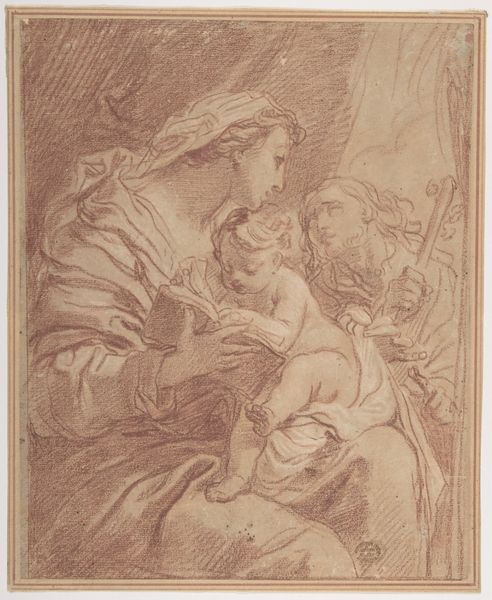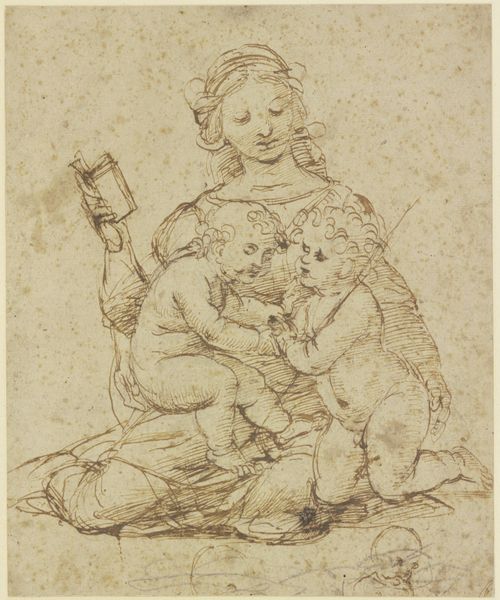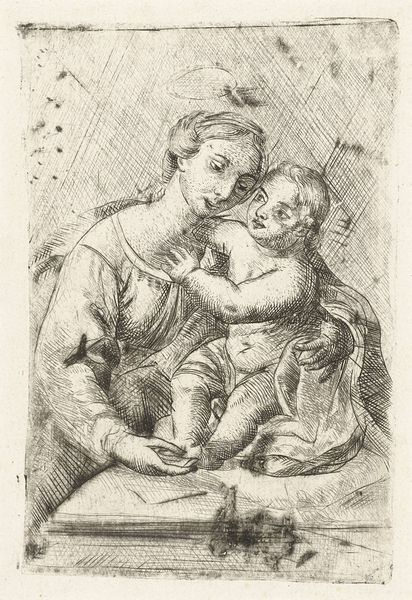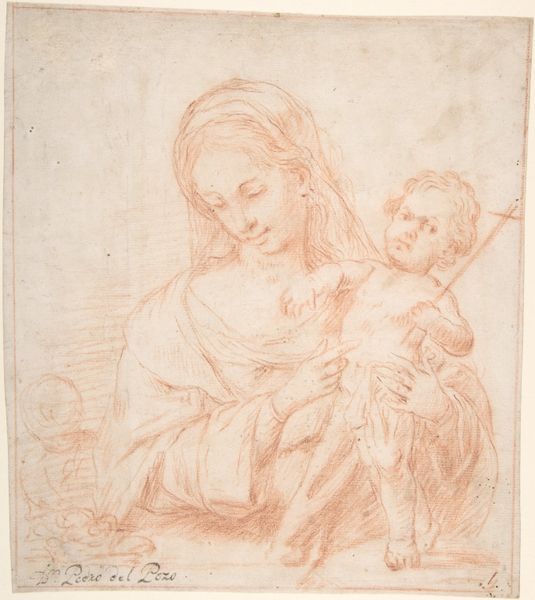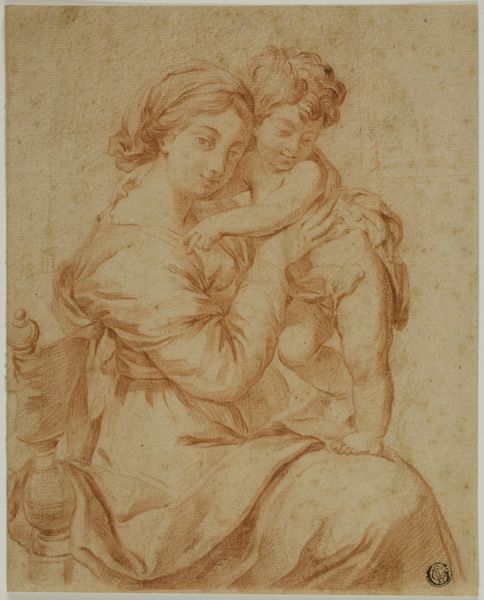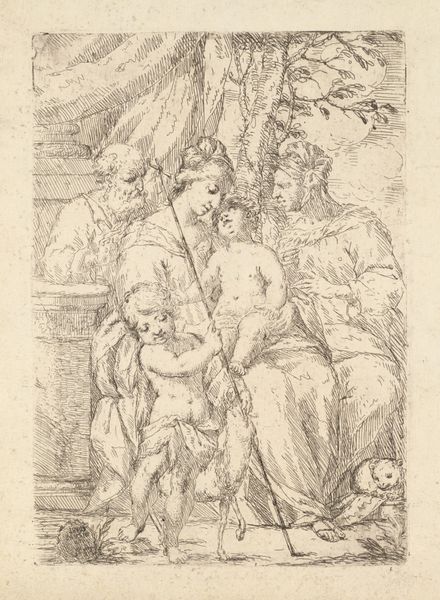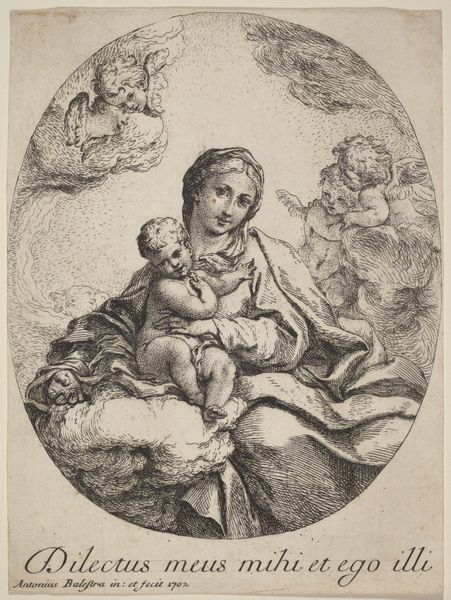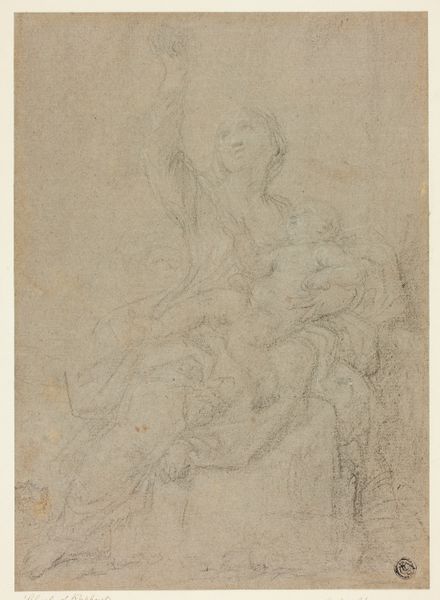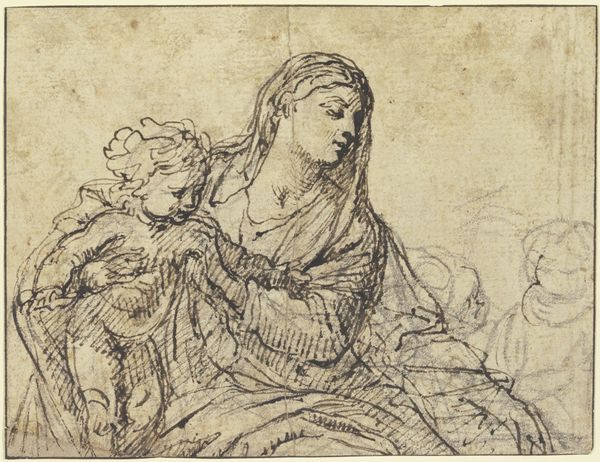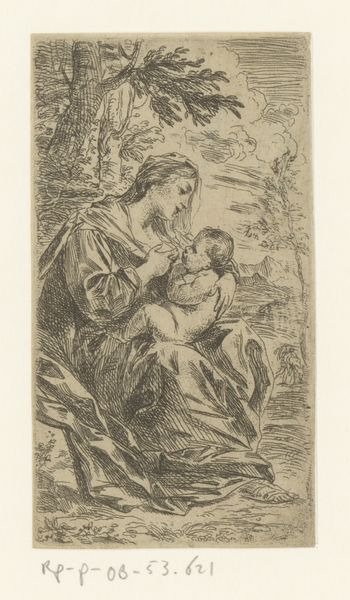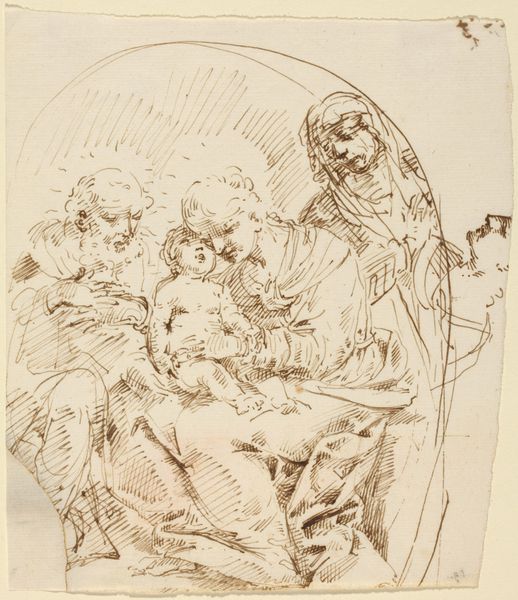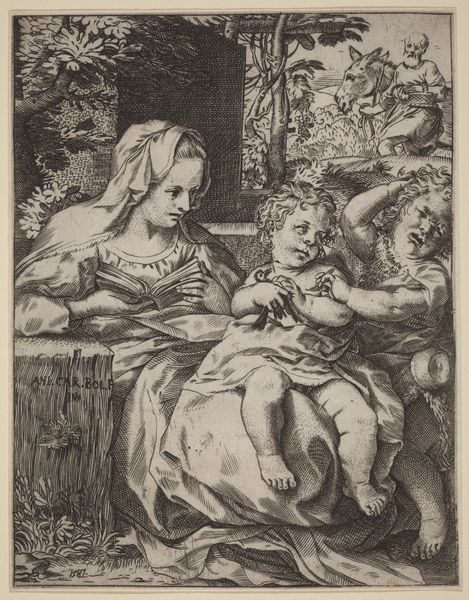
drawing, pencil
#
portrait
#
drawing
#
baroque
#
figuration
#
pencil
#
portrait drawing
#
history-painting
#
academic-art
Dimensions: height 257 mm, width 204 mm
Copyright: Rijks Museum: Open Domain
Editor: This is "H. Maagd met het Christuskind op haar schoot," made with pencil by Pierre Mignard between 1622 and 1695. The hatching makes me think of textiles...almost like I could reach out and feel the texture. What's your take? Curator: It's intriguing to consider Mignard's choice of pencil for this depiction of the Virgin and Child. We often view drawings as preparatory, but here, the medium itself elevates the work. Think about where he sourced the pencil, the labor involved in its production, and the access to materials that his patrons might have had. Editor: So, you’re saying the very choice of the pencil shows something about class and availability? Curator: Precisely. Pencil, though seemingly simple, becomes a conduit to understanding the social fabric of 17th-century art production. Was it easily available? If not, who did it represent or align with culturally at the time? We also have to consider that the work presents a narrative with its stylistic choices as well. It can be challenging to remove the story of these two religious icons. Editor: Interesting. So rather than just *seeing* the Virgin and Child, you see the economics behind the creation and those who commissioned it? Curator: Absolutely. And also, the blurring of lines – is this a drawing meant as a study, or a finished piece meant for display? It prompts us to question traditional hierarchies within the art world. Editor: That’s given me a lot to think about; the humble pencil adding such layers of interpretation. Curator: Exactly. Focusing on the materials forces us to move beyond just aesthetics and narratives to the complex web of production, access, and consumption shaping the artwork.
Comments
No comments
Be the first to comment and join the conversation on the ultimate creative platform.
